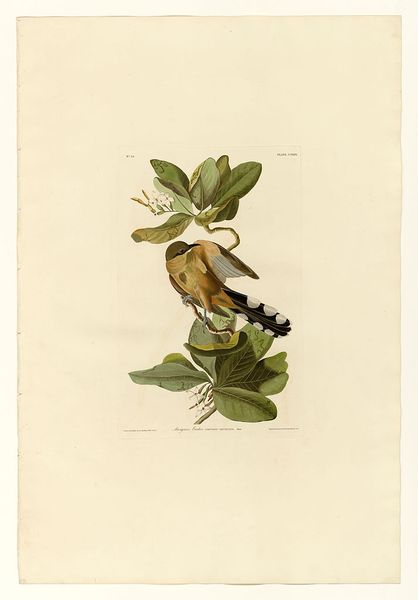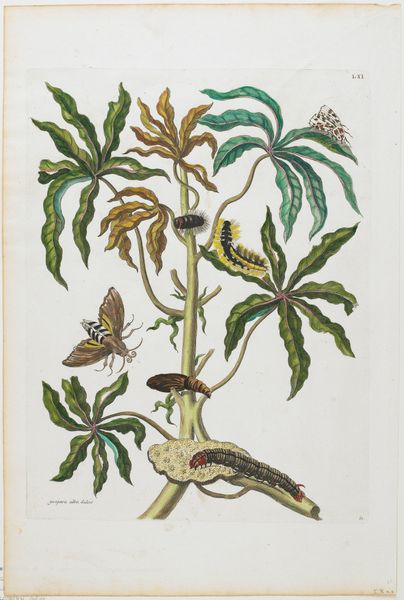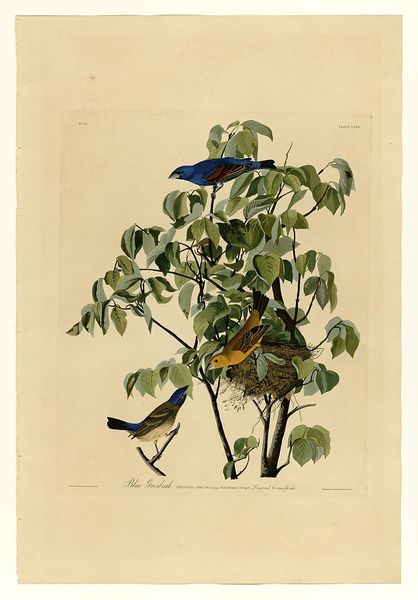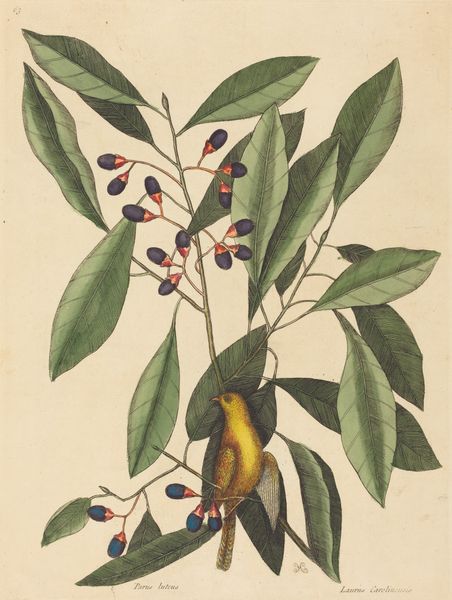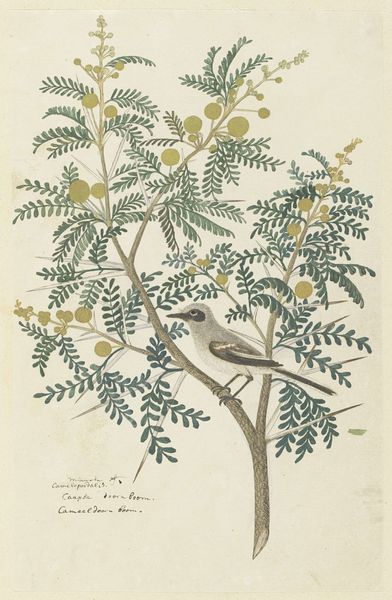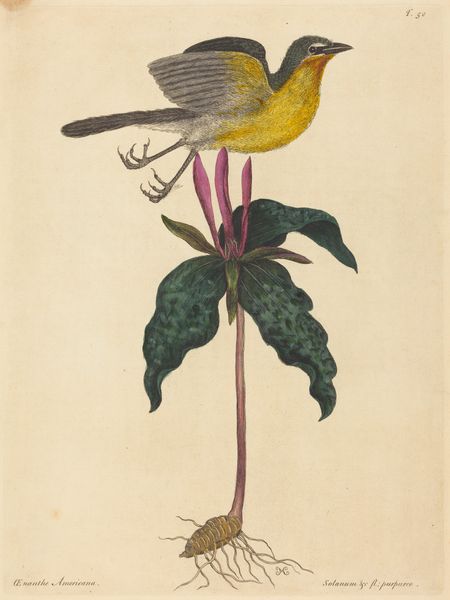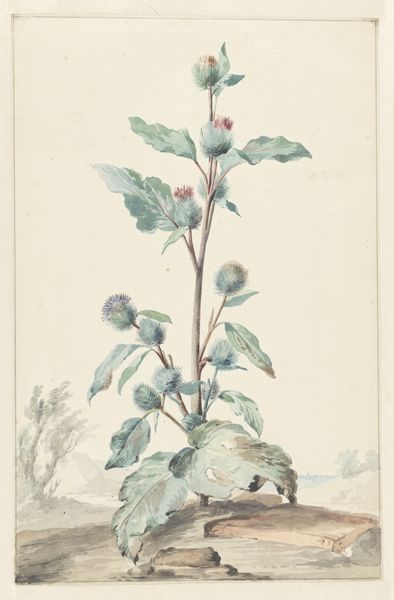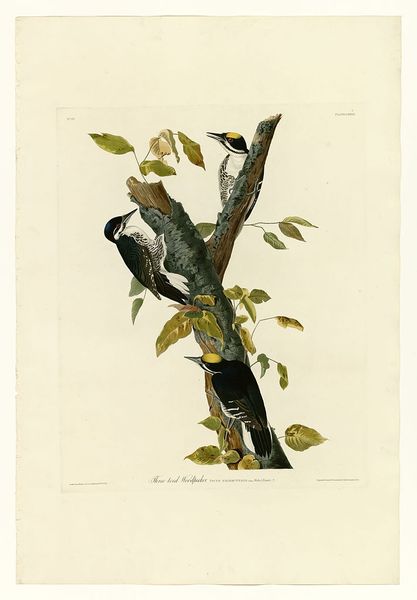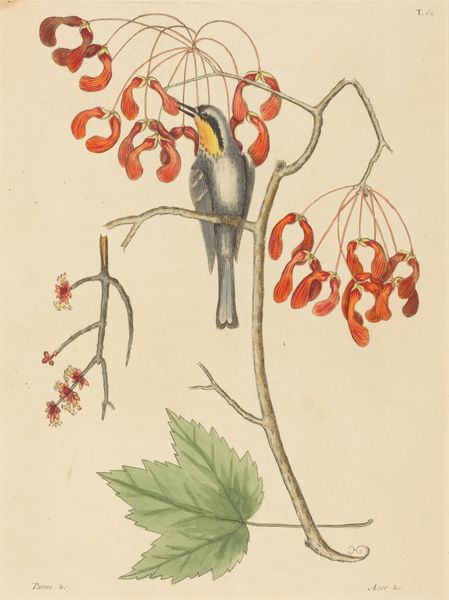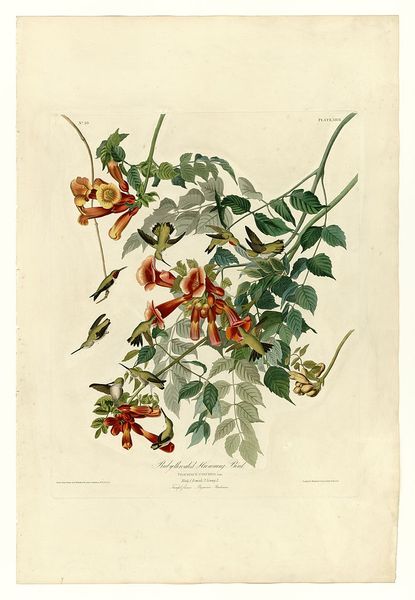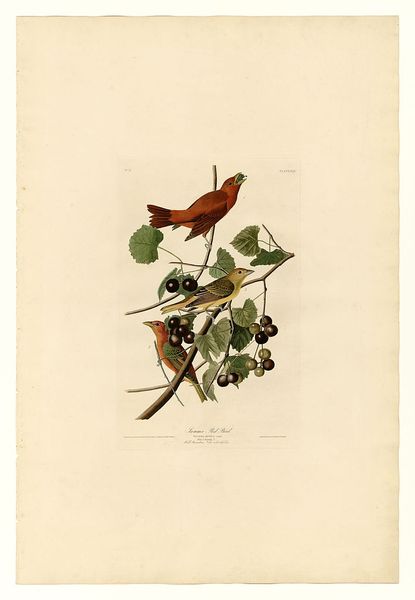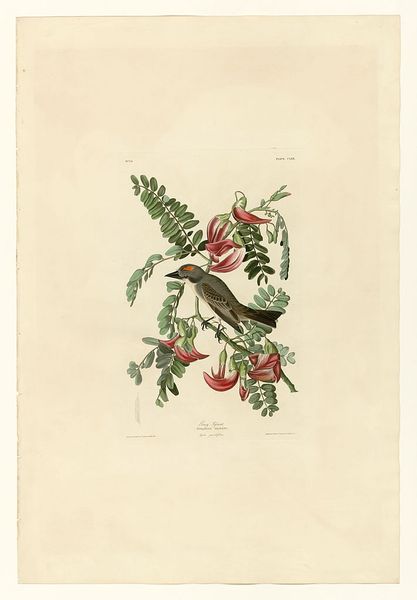
Dictyophorus spumans (Koppie foam grasshopper) perhched on a Zygophyllum sp. (Caper bean) Possibly 1777 - 1786
0:00
0:00
Dimensions: height 660 mm, width 480 mm, height 446 mm, width 290 mm, height mm, width mm
Copyright: Rijks Museum: Open Domain
Curator: Here we have a fascinating botanical illustration by Robert Jacob Gordon, dating possibly from 1777 to 1786. The piece, rendered in watercolor, depicts a Dictyophorus spumans—or Koppie foam grasshopper—perched rather dramatically on a Zygophyllum sp., a Caper bean. Editor: Oh, wow. That grasshopper just POPS! I mean, it's almost cartoonish in its vibrant red and speckled wings. Did grasshoppers back then really look like miniature dragons, or is that just artistic license? Curator: That's an insightful question. It reflects the romantic lens through which nature was often viewed in this period. Gordon wasn’t simply documenting; he was also interpreting. Think about the colonial gaze and its impact on how the natural world was perceived and portrayed. The very act of selecting and presenting this particular grasshopper on this specific plant speaks volumes about the relationship between the explorer, the environment, and the scientific project. Editor: Right, because there’s an element of...power in naming things, isn't there? It’s like claiming ownership. But tell me more about that grasshopper. It looks almost too heavy for the plant it is perched on. Curator: Indeed. Consider the foam grasshopper, the *Dictyophorus spumans.* It has a rather unique defense mechanism: it secretes a foamy, toxic liquid when threatened. How does that biological defense reflect, perhaps, the socio-political anxieties of the time? Gordon, working for the Dutch East India Company, was essentially mapping and cataloging resources. Understanding the local flora and fauna was key to resource extraction and control. Editor: Wow, that’s pretty heavy for a bug! I initially just saw something colorful and whimsical, but knowing that context definitely shifts the way I see this piece. Curator: Precisely! That is the point, isn’t it? By linking the scientific illustration to the social landscape, we can engage more critically with its message. The artist wasn't neutral but enmeshed within a political framework of colonial power. Editor: Totally. Now I look at it, and I don't just see a cool bug on a plant. It makes me wonder who, or what, gets to be represented and how those representations reinforce the power structures. Curator: And what that grasshopper might whisper if it could speak… Editor: Exactly. This piece reveals so much more the more you delve in, like a real adventure!
Comments
No comments
Be the first to comment and join the conversation on the ultimate creative platform.
